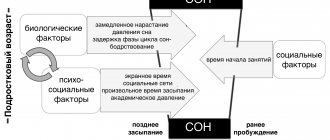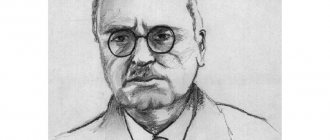Pick's disease is one of the types of senile dementia in which atrophic changes occur, most often in the frontal and temporal lobes of the brain. It occurs mainly in older people over 50 years of age. Clinical manifestations are similar to Alzheimer's disease, but are less common and more malignant. Women are diagnosed twice as often as men.
Disease history
Pick's disease has been little studied and is rarely diagnosed. From the moment of detection, 6–8 years pass until the end of life. The disease is based on atrophic processes in the brain, and this is not due to a hereditary predisposition, although doctors previously considered genetics to be the main factor in the development of the disease.
Czech doctor Albert Pick was the first to describe the symptoms of the disease in 1892, after which the pathology was named after him. It was he who suggested a hereditary connection - he discovered that relatives of people who suffer from dementia are also likely to develop it.
Arnold Pick did not consider pathology a separate disease, but assumed that it was only a variant of senile dementia. When the development of the disease was studied pathologically, distinctive morphological features were discovered, and it was identified as an independent nosology.
Dementia is...
Dementia is a progressive and irreversible process in parts of the brain, leading to loss of intelligence and a decrease in other mental functions of a person. However, consciousness at the onset of the disease remains clear for quite a long time, symptoms develop for approximately six months, although there are cases of reactive development of the disease.
The following factors can provoke dementia:
- uncontrolled use of medications;
- vitamin B deficiency;
- infections;
- alcohol abuse;
- tumors;
- head injuries.
The average life expectancy of a patient with this disease is no more than ten years.
Description of the disease
According to the literature, Alzheimer's disease is four times more common than Pick's dementia. Due to the rarity and complexity of diagnosis (at least intravital), there is not much data on the disease. It is known for sure that men get sick less often, and the pathology is progressive.
Senile dementia is characterized by severe mental impairment and neurological pathologies. The brain is affected mainly in the frontotemporal area, resulting in impaired behavior and speech.
Pick's disease is often diagnosed against the background of mental disorders, but they are not considered the root cause of the disease, although they provoke its development. Not only the temporal and frontal lobes can undergo atrophy - sometimes it goes beyond and affects the subcortex. In this case, there is no inflammation, vascular disorders are either absent or mild.
The neurodegenerative disease progresses slowly at first, but in the initial stages entire groups of nerve cells die. Over 5-7 years, they can spread to the entire brain, although the focus is observed mainly in the temporal and frontal lobes. First, destructive processes affect the second and third convolutions, and a little later - the first. Less commonly, the parietal lobes may be affected.
The manifestation of Pick's disease begins in the anterior frontal regions of the brain, which immediately affects a person's behavior and personal characteristics. Later, the temporal lobes, which are responsible for intelligence, memory, and concentration, undergo changes. The cortex of the speech analyzer is also destroyed, which immediately affects speech abilities.
Unlike other neurodegenerative pathologies in psychiatry, Pick's disease is characterized by deep damage to the entire lobe of the brain, and not just part of it. First, the upper layers are affected, then the process spreads deeper.
Examination of brain tissue under a microscope showed that patients experience “swelling” of cells, the thickness of the gray matter decreases, the transition from gray to white matter is blurred, and the boundaries are unclear. Another characteristic feature is the separation of the cerebral vascular endothelium. This causes circulatory disorders, stagnation of cerebrospinal fluid and, as a result, enhances neurodegenerative processes and atrophy. Moreover, separation of the endothelium always occurs in Pick's disease, but in Alzheimer's disease - only in 25% of cases.
Manifestations and characteristic signs
Examinations of patients diagnosed with Pick's disease reveal symptoms that are divided into two groups - difficulties with oral and written speech and behavioral disorders.
People around and close to the patient note that he is experiencing negative personality changes.
Among the characteristic manifestations are:
- Atrophy in the frontal regions of the brain
affects high mood, a person becomes completely irresponsible in the matter of managing everyday life and fulfilling his duties. There is absent-mindedness and inattention. Patients also often experience sexual liberation. - With atrophy of the temporal lobes,
patients exhibit opposite qualities - they become overly suspicious, it seems to them that others do not need them, they experience a feeling of loneliness and abandonment. - With any localization of the lesion
, speech is impaired, the meaning of speech is simplified, expressions of the same type appear, the ability to correctly construct sentences and convey one’s thoughts is impaired, as well as to understand and analyze the speech of other people. Patients stop taking care of themselves and become sloppy. Constant bouts of emotional outburst occur. - In the middle of the development of the disease,
the patient’s weight changes sharply, obesity occurs, and then the opposite state occurs - exhaustion of the body occurs with general weakness and deterioration in the functions of physiological processes.
We can definitely say that Pick’s disease radically changes a person’s personality.
Causes of the disease
The etiology of Pick's disease is still unclear. Although there are “familial” episodes of the disease, more often it is not transmitted from parents to children, but is diagnosed in siblings. However, the hereditary factor has been completely refuted.
Etiological factors are considered:
- negative effects on humans, in particular on the brain, of chemicals;
- incorrect dosage and/or frequent use of anesthesia;
- mental disorders.
Not the main, but provoking factor can be considered a lack of B vitamins, traumatic brain injuries, and intoxication. Some experts believe that a provoking factor may also be a failure in the metabolism of tau protein, a component that is an element of the cell membranes of neurons.
In this disease, brain cells undergo atrophy and destruction - they lose functionality, decrease in size or are completely destroyed. Regardless of the combination of symptoms, it is always accompanied by dementia due to a violation of the higher function of the cerebral cortex. In this case, dementia is acquired.
The risk group includes patients over 50–55 years of age, females, and in whose family there are cases of this type of dementia. Traumatic brain injuries do not serve as a provoking factor for infection, but significantly accelerate and aggravate the course of the disease.
The disease can be diagnosed in younger people as early as 40–45 years of age. But at this age it progresses slowly, the symptoms are mild, so patients rarely see a doctor, and at the time of diagnosis, the second stage is already detected. The onset most often is not so pronounced and can manifest itself in increased anxiety, loss of control over one’s actions, and depressive states, which the patients themselves usually justify as stress or other similar reasons.
Difference between Pick's disease and Alzheimer's disease
Alzheimer's and Pick's diseases are similar, but they are two separate forms of pathology with their own clinical manifestations. Common to the disease is dementia. But when diagnosing Pick's disease:
- memory is partially preserved;
- concentration remains;
- changes in personality characteristics are more pronounced - absence of emotions and a decrease in the frequency of their manifestation, apathy, indifference;
- if the basal cortex of the brain is damaged, the concepts of morality and morality disappear - a person loses his sense of tact and does not comply with generally accepted norms of behavior;
- if the brain is simultaneously affected in the area of the forehead and temples, speech changes, it becomes illegible, clumsiness appears in movements.
Unlike Alzheimer's disease, Pick's disease has difficulty navigating a new environment. He may go very close to home, but is unable to find his way back. In addition, disorientation in time is characteristic - it is difficult to determine what time of day it is.
In general, Alzheimer's disease is milder and its symptoms are not as pronounced. This affects the patient’s quality of life and its duration. Patients, as a rule, live shorter lives, their condition is more severe, and due to the progression of the disease they quickly lose their human appearance.
Questions and answers
Is it possible to cure Pick's disease permanently?
No, the progressive decline of brain function is an irreversible process. You can only correct its course and help the patient remain in clear consciousness for as long as possible.
Can two types of pathology—speech and behavioral—occur simultaneously?
No, the disease is formed by one of two mechanisms. First there is a disorder in the cognitive sphere, and then speech, and vice versa. Then other symptoms appear, including the manifestation of dementia, they increase in severity.
Stages of the disease
Pick's disease is divided into three stages. From detection to the end of the third stage, a maximum of 10 years passes, more often 6-7. Types of pathology:
- First stage. Characterized by disinhibition and actions that have no motive. For example, the patient may have neutralized basic instincts and lack control over his actions and emotions. Another characteristic feature of the onset of the disease is selfishness. In addition, libido sometimes increases and sexual disinhibition occurs. There are also changes in speech - repeated repetition of the same words, sentences or stories occurs. The emotional sphere at this stage is relatively stable - most often there is euphoria, which manifests itself in high spirits, but it can suddenly give way to complete apathy. There is no memory impairment yet, but at this stage the person cannot explain his strange behavior or justifies it with impatience.
- Second stage. All the symptoms described above get worse. Focal signs of dementia appear, speech becomes even less intelligible, it is difficult for the patient to understand and assimilate information, he may forget events that happened a long time ago or very recently. It may be difficult for him to count and perform targeted movements - fine motor skills are impaired. At this stage, the disease is almost identical to Alzheimer's disease, but there are no epileptic seizures. Another characteristic feature is imitating the movements/facial expressions of other people and automatically repeating new words. The pain threshold also increases (cutaneous hyperalgesia).
- Third stage. It is considered final. It is characterized by complete insanity, decreased muscle tone and, ultimately, a vegetative state of the patient. He cannot move, solve everyday issues, for example, eat, relieve natural needs, or dress. At this stage, incurable disability is diagnosed, which ends in death.
Stage 3 dementia is irreversible. At this time, the patient needs constant care - he himself is not able to perform even the simplest tasks, since his capacity, both mental and physical, is lost.
Pathology in men and women
Female patients suffer from this disease more often than males. The first symptoms of the pathology are very similar to the onset of menopause against the background of hormonal changes in the body, so timely diagnosis is difficult.
Signs and warning signs of the disease in women are similar to the development of depression and emotional disturbances. The accompanying behavioral disorders include:
- increased aggressiveness;
- unmotivated rudeness towards others;
- hysterics, frequent mood swings;
- low mood, apathy;
- poverty of the emotional spectrum, sometimes even a complete absence of emotions;
- manifestation of hypersexuality;
- indifference to loved ones, their experiences, lack of empathy.
Approximately 2 years after the onset of this set of symptoms, signs of dementia appear. The woman stops responding to the requests of others, she does not take care of herself and ignores the rules of personal hygiene. Physical weakness develops progressively, and patients often stop walking. They need to be fed and the patient’s condition constantly monitored. Speech is often disrupted, and it is very difficult even for loved ones to understand what a woman wants to say. Timely treatment of Pick's disease will help prevent a rapid increase in symptoms.
Men suffer from this disease much less frequently than women. Their set of symptoms is slightly different. The first sign of the development of pathology is increasing selfishness and conflict in behavior. A man becomes irritable, does not take into account the opinions of others, and can talk only to himself for hours. He concentrates only on himself, his desires, thoughts, plans.
- Attentiveness and sensitivity to the problems of loved ones fades into the background or disappears altogether.
- Touchiness prevents the patient from adequately perceiving reality and does not allow him to calmly analyze what is happening.
- The loss of morality is accompanied by a perverted form of sexual desire. The latter is expressed in the desire to spy on naked people or demonstrate their genitals to strangers.
- The mood changes dramatically; depression and apathy can turn into euphoria or a growing outburst of anger in a few minutes.
There are differences in the manifestation of the disease in young and old people. The natural aging process is accompanied by a decline in physiological functions. A person develops specific personality traits: increased emotionality, activity, impulsiveness and anxiety.
If you start treating Pick's disease at the first stage of development, there is a high chance of supporting the body and giving it an incentive for long-term resistance.
An elderly person sometimes cannot find words in communication; he can talk to long-dead people, visualizing them in his imagination. The sleep-wake pattern is disrupted, and increased anxiety is observed in the evening. It is expressed in constant walking around the house, at this stage symptoms of obsessive-compulsive disorder may appear.
If a disorder is diagnosed in a young person, its symptoms affect everyday and professional activities. Such a person loses morality, ceases to behave adequately in society, and provokes conflict situations in the work team. The pathology is accompanied by disorders of the speech apparatus, errors in written speech, the patient’s handwriting changes, and the ability to learn and acquire new skills decreases.
Symptoms
The severity of symptoms, as well as their range, depend on the stage of Pick’s disease. Main signs of the disease:
- Loss of moral principles. The patient may relieve his natural needs in inappropriate places, not control his behavior and statements, selfish character traits become aggravated, and overall behavior becomes asocial.
- Immediate realization of instincts. This also applies to sexual desire - with increased libido, frequent casual sexual contacts are possible, including with strangers. The possibility of waiting also disappears - all the physiological needs of the patient must be fulfilled as quickly as possible. For example, bulimia may develop - uncontrolled eating of large amounts of food even after satiety.
- Change in speech. It becomes indistinct, multiple repetitions of jokes, words, and individual phrases can be traced. This is called the "gramophone record" sign.
- Mood swings. It can range from euphoria to complete apathy, and only a few minutes can pass in between.
- Dementia. Its severity depends on how atrophic processes develop in the brain. But in general, emotional instability, periods of disinhibition and rigidity, loss of desires, goals, and complete lack of will can be traced. It is possible to develop depression, and sometimes a combination of inappropriate behavior with euphoria.
The more Pick's disease progresses, the more severe the symptoms become:
- misunderstanding the speech of others;
- loss of basic numeracy, writing and reading skills;
- inadequate perception of what is happening around;
- memory losses;
- inability to perform actions consistently and logically;
- at the end, deep dementia, disorientation, and loss of self-care skills develop.
If at first such violations are episodic in nature, then by the end of the second and third stages they become permanent, progressing until the complete destruction of the intellect.
The death of patients with Pick's disease is most often due to a combination of a number of factors:
- cerebral insufficiency;
- infection of bedsores followed by sepsis;
- congestive pneumonia due to constant exposure to a horizontal position;
- ascending pyelonephritis, etc.
Changes affect the physical and mental spheres of a person. Some develop obesity or, on the contrary, exhaustion, intelligence suffers greatly - vocabulary gradually decreases, a person loses previously acquired knowledge, even if before the disease he was a specialist in his field with an above-average level of intelligence.
Diagnostics
Diagnosis usually begins with interviewing family and friends, collecting anamnesis and examining the patient. Diagnostic measures are divided into several stages:
- Differentiation of the disease from other pathologies, for example, Alzheimer's disease. It is also necessary to exclude oncology, vascular disorders, schizophrenic syndrome, and tumor processes in the frontal zone of the brain.
- Additional consultations with narrow specialists. For example, consultations with a neurologist or psychiatrist may be required.
- EEG. A decrease in the bioelectrical signature emanating from the frontal areas of the brain is recorded.
- REG, ultrasound. This diagnosis allows you to exclude or confirm vascular changes.
- EchoEG. Allows you to detect the presence of fluid in the brain.
- MRI. Necessary for clear visualization of atrophic changes in brain tissue.
Laboratory tests, as a rule, are not required for the patient. They have no diagnostic value. It is extremely rare that a biochemical blood test may be prescribed.
Possible complications and consequences
Pick's disease is an incurable disease. With the best care and the right type of therapy, it will not be possible to stop its development. You can only correct the patient’s well-being.
In the early stages, patients primarily experience moral complications. The problem becomes the inevitability of awareness of the onset of a vegetative state. Against this background, a significant proportion of patients experience depression.
As Pick's disease progresses, patients lose contact with the outside world. The state of health gradually deteriorates due to the appearance of stagnation in muscle tissue. To eliminate unpleasant manifestations, massages are recommended. Blood flow to the skin reduces the risk of bedsores. Without proper care, patients with Pick's disease rapidly develop congestive pneumonia and ascending pyelonephritis.
To eliminate the risk of further deterioration in health, patients require constant medical supervision. Prescription of additional medications to relieve manifestations of concomitant diseases.
The list of complications of this serious disease:
- the patient’s transition to the stage of deep insanity, excluding the manifestation of cognitive functions;
- complete immobility sets in, caused by the patient's inability to understand that he simply must do something.
An incurable disease leads to death in a short time. The task of relatives and friends is to alleviate the condition of an incurable patient.
Treatment
Unfortunately, there is currently no effective therapy for Pick's disease. The main task of the doctor after diagnosing this disease is to support the patient’s body and slow down the destructive processes in the brain. Accordingly, treatment is selected based on the stage of the pathology and the presence of certain symptoms. It can be:
- antidepressants;
- MFO inhibitors;
- neuroprotectors to stimulate metabolic processes in the brain and increase cell activity, which helps slow down atrophic processes;
- sometimes anti-inflammatory therapy is needed;
- sedatives stabilize the psycho-emotional background and reduce aggressiveness.
One of the stages of helping a patient is constant care in the final stages. When a patient loses self-care skills, not only is he unable to perform most common household tasks, but he may also cause harm to himself or others. The solution to this problem is professional nursing care if relatives cannot be with the patient around the clock.
There is also no specific prevention for Pick's disease. General recommendations relate to maintaining a healthy lifestyle, promptly consulting a doctor if you suspect brain pathologies, and taking activities that improve cognitive function. People who have relatives with a similar disease or other types of dementia should be especially careful.
The prognosis for Pick's disease is poor. The duration of the disease until the patient’s death is influenced by age, general health, and the adequacy of the prescribed therapy.











